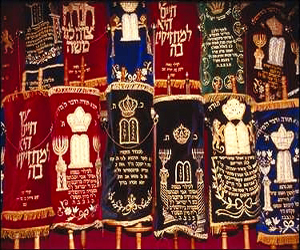Purim in Tzfat
Purim's History
In the year 438 B.C.E, a new king ascended the throne of ancient Persia. It was an occurrence which elicited little notice in those days, and even when viewed today, is of little historical importance.
Yet that event triggered a chain of events which is remembered today throughout the Jewish world in a day of rollicking laughter, fun, and crazy behavior that encompasses Jews everywhere.
After the expulsion of Jews to Babylonia, the Jews came under Persian rule when the Babylonian empire fell to Persia. Many Jews moved to Persia and lived comfortably. When a new king brought in his anti-Semitic minister, the lives of all the Jews were threatened, but through a series of coincidences, happenstances and plain old miracles, the plans of the minister were thwarted, and ever since, the day that marks this victory, Purim, has signaled Jewish revelry and merriment.
Residents of Tzfat, of course, celebrate like their brethren, though Tzfat's celebrations always seem to have a special flavor.
Making Merry
The "official" opening of Purim is Rosh Hodesh Adar, the first day of the month of Adar, when Purim falls. Already on that day, 15 days before the actual holiday, the city starts its preparations. Whereas a series of bells generally note the beginnings and recesses at the schools, during this period, the school loudspeakers blare Purim music. Storekeepers can often be found tending to their shops wearing false noses and funny hats. And even in the ultra-Orthodox neighborhoods, stink bombs find their way into apartment hallways and false "doggie doo" is strategically placed on the street to startle the generally unflappable matrons as they scurry on their way to the supermarket or other errands in the neighborhood.
On the last school day before Purim vacation, children come to their kindergartens and schools dressed in costume. Many adults who otherwise would have no reason to be on the street at 8:00a.m. insure that they are out at that time, for the procession of excited youngsters walking to school as cowboys, princesses, witches and every other dress-up imaginable is a highlight of the year. For the Ethiopian children who live in Tzfat's two Ethiopian Absorption Centers, this is a new experience - the Ethiopian Jewish community was separated from the mainstream Jewish world before the Babylonian exile, so the Purim tradition is not theirs. They quickly become excited participants though, as the children don their costumes and join the colorful trek to school while their parents, as amazed as their children, join in this one new step towards becoming Israelis.
On the actual holiday of Purim, the Ethiopians are invited to several synagogues throughout the city, where their children, now well-versed in the new customs, dash around in their costumes with the Israeli-born children. The Ethiopian adults, dressed in traditional white robes with babies on their mothers' backs, sit with the congregation as all listen to the "Megilla", the reading of the Purim Story. In many of the Hassidic synagogues, the children, and even some adults are dressed as secular Israelis with tattoos, spiked hair and blue jeans, while in other synagogues, secular and more modern religious people dress up in Hassidic garb with white socks, sidelocks, and black hats.
Yet as they dash through the street throughout the following day, all wish each other a "Purim Samayach" (happy Purim) and often stop to share a few Purim cookies, and, for the adults, some drinks. The Purim tradition of getting drunk makes that holiday a celebration of unity, for everyone enjoys getting drunk together.

